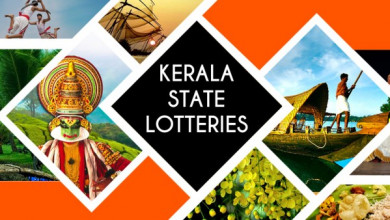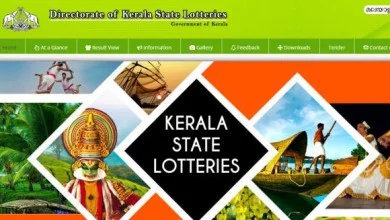Monitoring Committee to Identify Polluted Rivers

Central Pollution Control Board (CPCB) in collaboration with the State Pollution Control Boards (SPCBs)/Pollution Control Committees (PCCs) is regularly monitoring the water quality of rivers & other water bodies in the country through a network of monitoring stations. As per CPCB report of September, 2018, 351 polluted river stretches have been identified on 323 rivers based on monitoring results in terms of Bio-chemical Oxygen Demand(BOD) levels, an indicator of organic pollution. State-wise details of polluted river stretches are given at Annexure.
Cleaning and rejuvenation of rivers is a continuous process and Central Government is supplementing the efforts of the State Governments and Union Territories in addressing the challenges of pollution of rivers by providing financial and technical assistance through schemes like National River Conservation Plan (NRCP) and Namami Gange. NRCP has so far covered polluted stretches of 34 rivers in 77 towns spread over 16 States in the country with a sanctioned cost of Rs.5965.90 crore & sewage treatment capacity of 2522.03 million litres per day (mld) has been created. Under Namami Gange programme, a total of 335 projects have been sanctioned at a cost of Rs.29,578 crore so far, of which 142 projects have been completed and made operational. Out of 335 projects, 156 projects are in the sewerage sector for creation of total sewage treatment capacity of 4867mld, and sewerage network of 5066 kms.
In addition, sewerage infrastructure is created under programs like Atal Mission for Rejuvenation & Urban Transformation (AMRUT) and Smart Cities Mission of Ministry of Housing & Urban Affairs.
As per the Provisions of Environment (Protection) Act, 1986 and Water (Prevention & Control of Pollution), Act 1974, industrial units are required to install effluent treatment plants (ETPs) and treat their effluents to comply with stipulated environmental standards before discharging into rivers and water bodies. Accordingly, CPCB, SPCBs and PCCs monitor industries with respect to effluent discharge standards and take action for non-compliance under provisions of these Acts.
Steps taken by the Government to stop discharge of industrial effluents into rivers inter alia, include issuance of notification of specific discharge standards, revision of the criteria for categorization of industries and issuing directions to all State Pollution Control Boards (SPCBs)/Pollution Control Committees (PCCs) to adopt the same, issuance of consent to establish/consent to operate by the SPCBs/PCCs, based on Comprehensive Environment Pollution Index (CEPI) critically polluted areas are identified to take necessary measures through time-targeted Action Plans, regular inspections of Grossly Polluting Industries (GPIs) by CPCB for compliance verification, installation of Online Continuous Effluent Monitoring System (OCEMS) for assessment of effluent quality and compliance status. In addition, the industries are encouraged to reduce their waste water generation by technological advancement, reuse/recycle of wastewater and maintain Zero Liquid Discharge (ZLD) where ever possible.
Besides, in compliance of the orders of National Green Tribunal in OA No.673/2018, concerned States are implementing Action Plans for restoration of water quality in the identified polluted stretches of rivers in their respective States. River Rejuvenation Committees (RRC) have been constituted by State Governments/Union Territories for implementation of approved Action Plans and a Central Monitoring Committee(CMC)has been constituted at Central level to monitor progress of implementation.
This information was given by the Minister of State for Jal Shakti & Social Justice and Empowerment, Shri. Rattan Lal Kataria in a written reply in Rajya Sabha today.
*****
BY/AS
Annexure
Annexure referred to in reply to parts (a) to (c) of Rajya Sabha Unstarred Question No.1529 to be answered on the 08.03.2021 regarding “Monitoring Committee to identify polluted rivers”.
State / UTs Wise Polluted River Stretches
| S.No. | Name Of State | Name Of Polluted River Stretches | Number |
| 1 | Andhra Pradesh | Kundu, Tungabhadra, Godavari, Krishna, Nagavali | 5 |
| 2 | Assam | Bharalu, Borsola, Deepar Bill, Digboi, Kamalpur, PanchnaiBrahamputra, Kharsang, Pagldia, Barak, Baroi Bega, Beki, Bhogdoi, Boginadi, Borbeel, BordoibamBeelmukh, Burhidihing, Dhansiri, Dikhow, Dikrong, Diplai, Disang, Gabharu, Holudunga, Jai Bharali, Jhanji, Kalong, Kapili, Killing, Kohora, Kulsi, Malini, Mora Bharali, Parashali, Puthimari, Ranga, Samaguri, Sankosh, Silsako, Sorusola, Son, Sonai, TengaPukhuri | 44 |
| 3 | Bihar | Sirsia, Farmar, Ganga, Poonpun, Ram Rekha, Sikrahna | 6 |
| 4 | Chhattisgarh | Hasdeo, Kharoon, Mahanadi, Seonath, Kelo | 5 |
| 5 | Daman, Diu and Dadra Nagar Haveli | Damanganga | 1 |
| 6 | Delhi | Yamuna, | 1 |
| 7 | Goa | Sal, Mandovi, Talpona, Assonora, Bicholim, Chapora, Khandepar, Sinquerim, Tiracol, Valvant, Zuari | 11 |
| 8 | Gujarat | Amlakhadi, Bhadar, Bhogavo, Khari, Sabarmati, Vishwamitri, Dhadar, Triveni, Amravati (Tributary Of Narmada), Damanganga, Kolak, Mahi, Shedhi, Tapi, Anas, BalehwarKhadi, Kim, Meshwa, Mindhola, Narmada | 20 |
| 9 | Haryana | Ghaggar, Yamuna | 2 |
| 10 | Himachal Pradesh | Sukhana, Markanda, Sirsa, Ashwani, Beas, Giri, Pabbar | 7 |
| 11 | Jammu & Kashmir | Devika, Banganga, ChuntKol, Gawkadal, Tawi, Basanter, Chenab, Jhelam, Sindh | 9 |
| 12 | Jharkhand | Garga, Sankh, Subarnarekha, Damodar, Jumar, Konar, Nalkari | 7 |
| 13 | Karnataka | Arkavathi, Lakshmantirtha, Malprbha, Tungabhadra, Bhadra, Cauvery, Kabini, Kagina, Kali, Krishna, Shimsha, AsangiNalla, Bhima, Kumardhara, Netravathi, Tunga, Yagachi | 17 |
| 14 | Kerala | Karamana, Bharathapuzha, Kadambayar, Keecheri, Manimala, Pamba, Bhavani, Chitrapuzha, Kadalundy, Kallai, Karuvannur, Kavvai, Kuppam, Kuttiyady, Mogral, Periyar, Peruvamba, Puzhackal, Ramapuram, Thirur, Uppala | 21
|
| 15 | Madhya Pradesh | Chambal, Khan, Kshipra, Betwa, Sone, Gohad, Kolar, Tapi, Bichia, Chamla, Choupan, Kalisot, Kanhan, Katni, Kunda, Malei, Mandakini (Mp), Newaj, Parvati, Simrar, Tons, Wainganga | 22 |
| 16 | Maharashtra | Godavari, Kalu, Kundalika, Mithi, Morna, Mula, Mutha, Nira, Vel, Bhima, Indrayani, Mula-Mutha, Pawana, Wainganga, Wardha, Ghod, Kanhan, Kolar (Mah), Krishna, Mor, Patalganga, Pedhi, Penganga, Purna, Tapi, Urmodi, Venna, Waghur, Wena, Bindusar, Bori, Chandrabhaga, Darna, Girna, Hiwara, Koyna, Pehlar, Sina, Titur, Amba, Bhatsa, Gomai, Kan, Manjeera, Panchganga, Panzara, Rangavali, Savitri, Surya, Tansa, Ulhas, Vaitarna, Vashisti | 53 |
| Contd… | |||
| 17 | Manipur | Nambul, Imphal, Iril, Khuga, Khujairok, Lokchao, Manipur, Thoubal, Wangjing | 9 |
| 18 | Meghalaya | Umkhrah, Umshyrpi, Kyrhukhla, Nonbah, Umtrew, Lukha, Myntdu | 7 |
| 19 | Mizoram | Tiau, Tlawng, Tuipui, Tuivawl, Chite, Mat, Saikah, Tuikual, Tuirial | 9 |
| 20 | Nagaland | Dhansiri, Dzuna, Chathe, Dzu, Dzucha, Sano | 6 |
| 21 | Odisha | Gangua, GuradihNallah, Kathajodi, Nandirajhor, Daya, Kuakhai, BanguruNallah, Bheden, Brahamani, Budhabalnaga, Kusumi, Mahanadi, Mangala, Nagavalli, Nuna, Ratnachira, Rushikulya, Sabulia, Serua | 19 |
| 22 | Puducherry | Arasalar, Chunnambar | 2 |
| 23 | Punjab | Ghaggar, Satluj, Kali Bein, Beas | 4 |
| 24 | Rajasthan | Banas, Chambal, | 2 |
| 25 | Sikkim | ManeyKhola, Rangit, Ranichu, Teesta | 4 |
| 26 | Tamil Nadu | Cauvery, Sarabanga, ThirumanimUthar, Vasista, Bhavani, Tambirapani | 6 |
| 27 | Telangana | Musi, Manjeera, Nakkavagu, Karakavagu, Maner, Godavari, Kinnersani, Krishna | 8 |
| 28 | Tripura | Burigaon, Gumti, Haora, Juri, Khowai, Manu | 6 |
| 29 | Uttar Pradesh | Hindon, Kalinadi, Varuna, Yamuna, Gomti, Ganga, Ramganga, Betwa, Ghaghara, Rapti, Sai, Saryu | 12 |
| 30 | Uttarakhand | Bhela, Dhela, Suswa, Kichha, Kalyani, Ganga, Kosi, Nandour, Pilkhar | 9 |
| 31 | West Bengal | Vindhadhari, Mahananda, Churni, Dwarka, Ganga, Damodar, Jalangi, Kansi, Mathabhanga, Barakar, Dwarakeshwar, Kaljani, Karola, Mayurkashi, Rupnarayan, Silabati, Teesta | 17 |
| Grand Total : | 351 | ||



